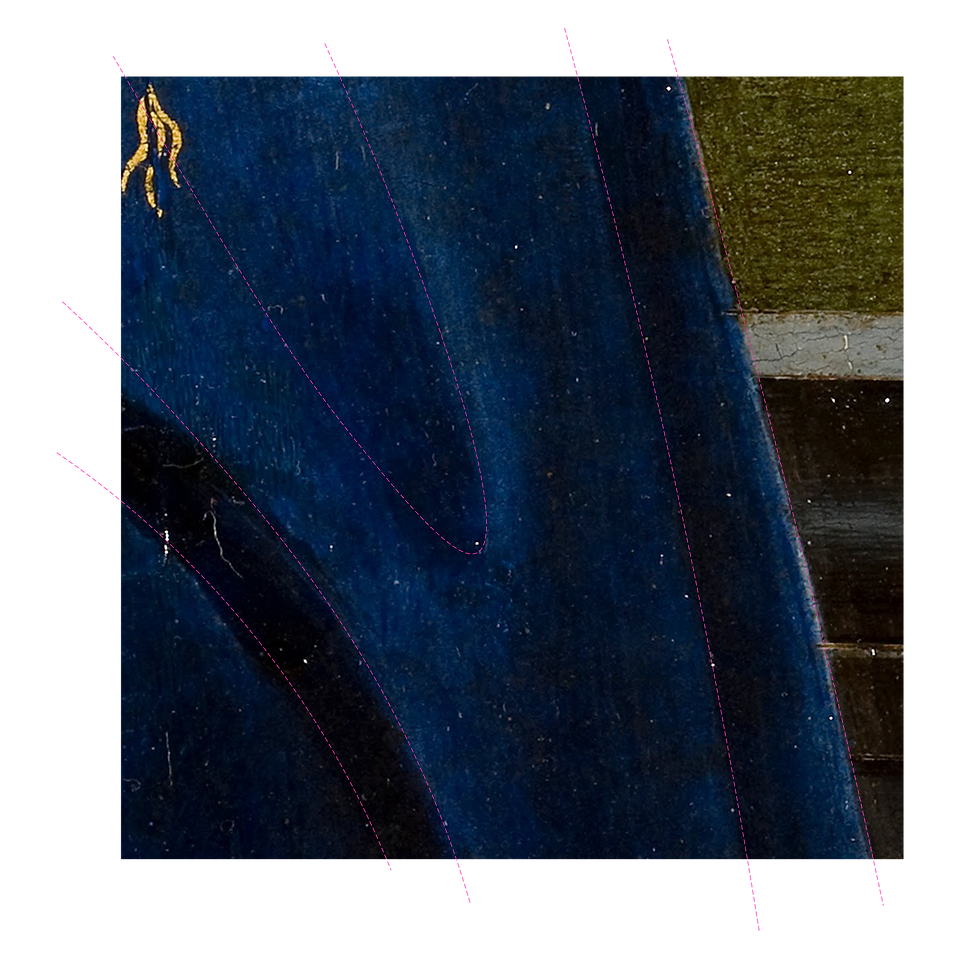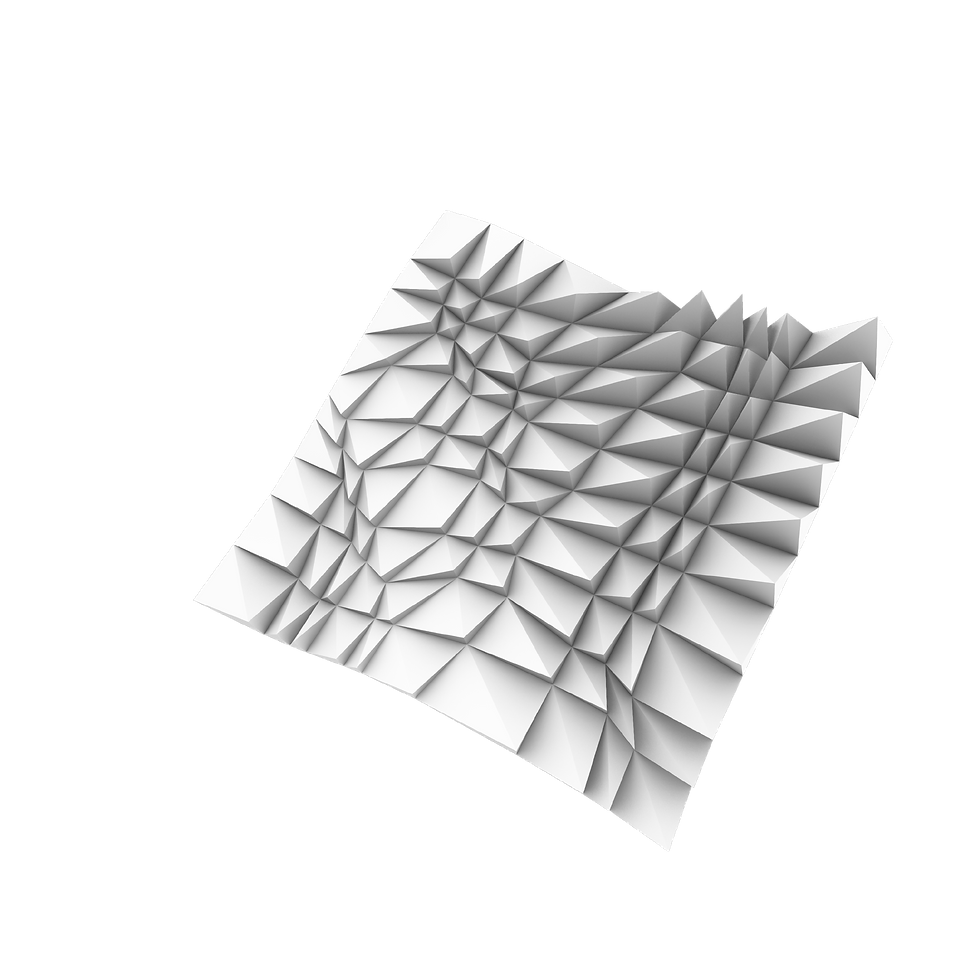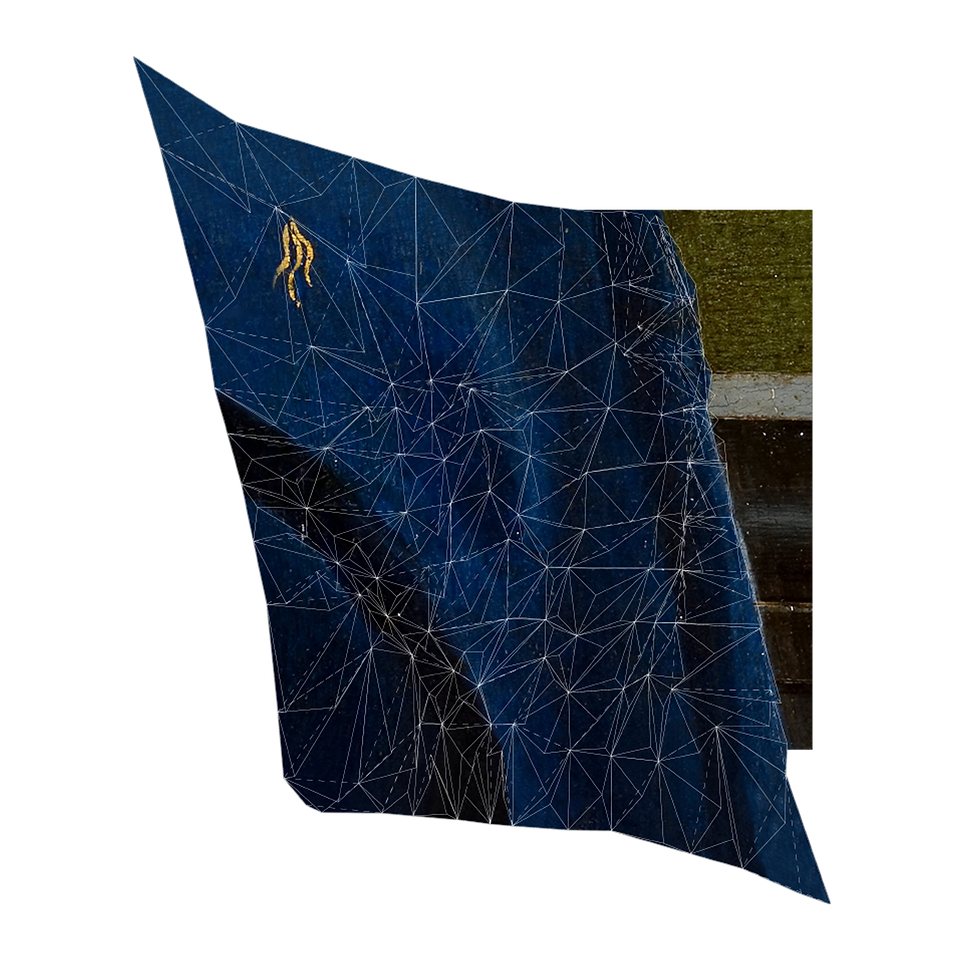
SURFACE
VS.
PATTERN
MODULE THREE.
Description.
A hybrid and composite surface were designed, influenced by a terrain section of the Tasmanian landscape and a sample from Botecelli’s ‘Madonna of the Book’ panel.






OVERVIEW
PROCESS
Areas of darkness in the painting sample where translated to regions of light areas were to be read as regions of elevation. In order for these differences in depth to be read in a topographical view, the darker areas were also emphasized by the use of tightly packed winding canyons of panels with more intricate multi-peaked pyramids to attract darker shadow, in contrast to the elevated singly-peaked panels whose large surface areas would let light linger. The tightly packed panels which translate to valleys of depth were further accentuated by creating tension, forcing the panels to points up to the left, contradicting the free-flowing trend of the elevated panels down towards the right of the study.



Analysis.
Fabric Sample
Terrain Sample
Madonna of the Book, Botecelli
The slopes of the provided sloped terrain and fabric sample’s downward flowing gestural direction was interpreted to depict a dramatic scenery of a flowing valley when the flat pattern and 3-dimensional surface became complementary.



Grid Study.
By offsetting points and applying curve attractors, I manipulated the grid to resemble the flowing nature of the sample fabric and distinguish regions of darkness from regions of height through widening and compressing modules.





Panel Study.
Hybrid Study.
Using the standard unmodulated grid, various triangular module forms were experimented with, using attractor points and curved to elevate high points and deepen areas correlating to ridges within the fabric sample.
Grid and panel studies were hybridized to form a re-appropriated surface where both samples complement one another through matching regions of elevation with broad accentuated modules and contorting darker regions to create tonal hierarchy through shadow and form.
Developability.

In order for a design to be physically manufactured in a 3-dimensional form, all surfaces must be developable. This allows for easy and efficient assembly and economically-feasible outcomes.
Digital fabrication uses digital platforms to cut parts with computerised mechanisms which can be used to manufacture a 3-dimensional design. This allows for 2-dimensional patterns to be adapted to create surfaces and spatial structures.
The hybrid consists of four panel structures, each triangular in nature, to allow for planar surfaces and eliminate curvature. Each module was individually unrolled to confirm its developability. Overlapping unrolls were redesigned to allow for most efficient manufacturing.


The Artefact.
The final artefact combines these elements of varied light, depth and tone to produce a valley-like scene whose valleys complement the implied vertical valley oscillations in the painting sample, whilst aiming to clearly direct an organic flowing sense across the piece horizontally, provoking a rhythmic movement which a piece of drapery may provide.
Rendering.


By creating a curved surface to be used as a backdrop for the final artefact, a scene of lighting could be established to illuminate the design for final capturing.
Two lights where set up in Rhino, with varied intensity and angle in order to cancel unwanted shadow, whilst still portraying the interesting changes in tonality throughout.

The Composite.
Finally, the artefact was combined with the initial fabric sample, in order to create an implied surface in the form of a 2-Dimensional pattern.
The artefact's modules are indicated by the line weights and suit the nature of the fabric's form and high- and low-points.
Reflection.
This module allowed me to experiment with the manipulation of various functions (such as offset points, curve attractors, point attractors etc.), in order to find the most suited combination of variables through iterative workflow. In this sense, the task was almost mathematical, and I believe my analytical approach allowed an interesting relationship between the fabric sample's flat tonal implications and the artefacts 3-Dimensionality to arise.
I believe that the panel and hybrid studies were particularly effective in creating a sense of the fabric and terrain's perceived spatial presence by using only simple artistic elements of shadow, form and contortion. The rendering outputs could be further experimented upon to illustrate the valley-like surface outcome more effectively.
By learning more about developable surfaces and their integral place in industrial manufacturing, this module allowed for insight into digital fabrication and modelling tools.